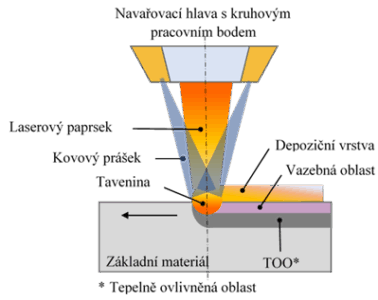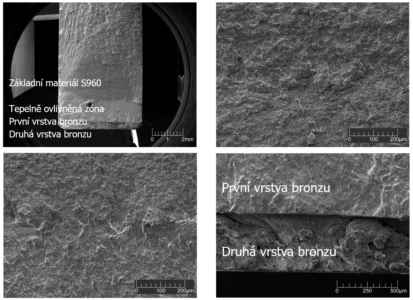Prof. Martin Krejsa from the Faculty of Civil Engineering, VSB – Technical University of Ostrava, has received an Honourable Mention of the President of the Czech Science Foundation (GA ČR) for the excellent results of the standard project “Influence of Material Properties of High-Strength Steels on the Durability of Engineering Structures and Bridges” (GAČR 21-14886S). The project was successfully carried out in collaboration with Assoc. Prof. Stanislav Seitl from the Institute of Physics of Materials of the Czech Academy of Sciences (IPM CAS).
This honorary recognition is awarded annually for outstanding results achieved within GA ČR projects completed in the previous year (https://gacr.cz/kdo-byl-nominovan-na-cenu-predsedy-ga-cr-v-roce-2025/). It is granted to only ten researchers each year — two in each of the supported fields of research.
Within the project, test specimens with surface corrosion damage were analysed using both a salt spray chamber (5 % NaCl solution) and natural outdoor exposure. Samples for fatigue tests were prepared from all tested grades of high-strength steels (HSS). In accordance with the project proposal, all required analyses of corrosion layers and the substrate beneath them were performed, including corrosion losses, layer thickness, chemical and phase composition, and adhesion of corrosion products. Surface analyses were conducted using 3D scanning and digital microscopy.
Furthermore, corrosion detection was carried out using digital images of corroded structural components and a unique computational approach based on the Bayesian methodology. Input parameters for the stochastic models were derived from real material data obtained experimentally and processed through advanced statistical analysis.
Various HSS samples with different corrosion levels and surface conditions were tested under static and fatigue loading (R = 0.1 and –1). Fatigue life curves were determined for both high- and very-high-cycle fatigue regimes. Critical distances were calculated from experimental data of smooth and notched specimens, using finite element method (FEM) stress distributions at the notch tip. The microstructure of HSS was examined with a TESCAN Lyra3 scanning electron microscope, revealing significant slip activity near crack initiation sites.
Numerical modelling was performed in ANSYS using FEM techniques. Selected fracture criteria were applied in both classical single-parameter and generalized multi-parameter forms to estimate the crack propagation angle near corrosion pits. A methodology for probabilistic modelling of fatigue damage prediction in HSS structures was developed, based on the Direct Optimized Probabilistic Calculation (DOProC) method. Computational time reduction was achieved through parallel computing implementation, with results confirming that parallel processing significantly shortens calculation times without a noticeable loss in accuracy.
Additionally, a computational approach for evaluating the variability and spatial distribution of corroded surfaces was developed as a preliminary step for FEM-based simulations of corrosion-induced surface losses. More details can be found on the IPM project website.
The project results contribute to more accurate assessments of the service life of steel structures and provide a reliable framework for the design and maintenance of modern transport infrastructure. The outcomes have been published in ten impact-factor journal articles, as well as in two master’s and eight doctoral theses.
The members of the FRACTIGUE group played a major role in the project’s success.
👏 We sincerely congratulate the team on this recognition and thank all colleagues for their outstanding work!







